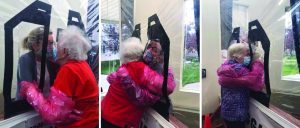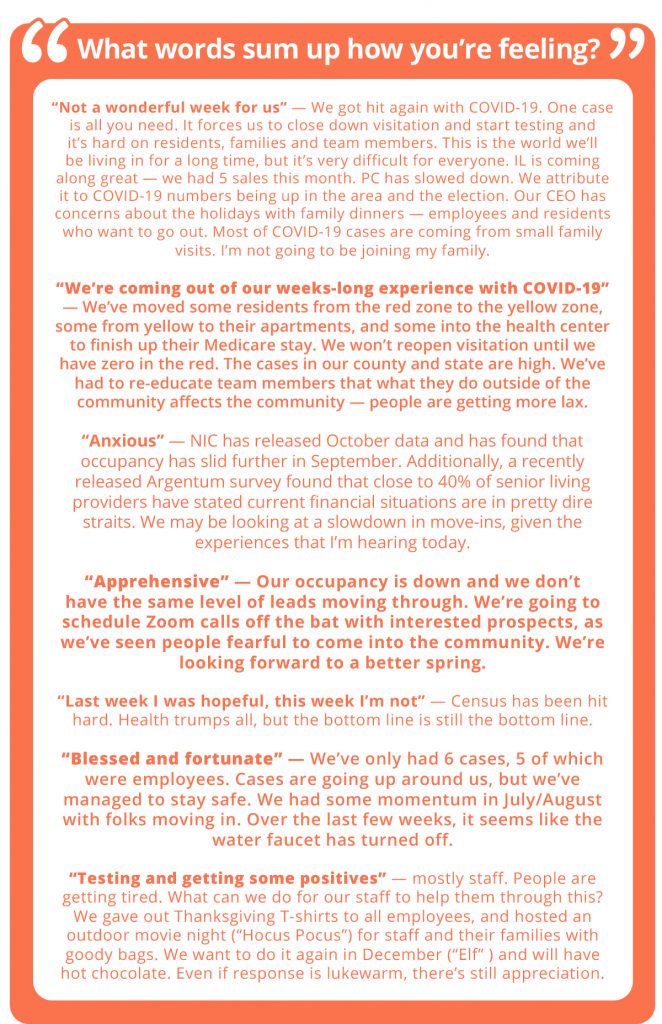Guest post by Dr. Tamir Aldad, CEO of Mindful Care
I’m an addiction psychiatrist by training. In my work, I found that access to care was a major issue for seniors experiencing mental illness. In fact, my grandmother was dealing with really bad depression and we had nowhere to take her. That is part of why, in 2018, I founded Mindful Care, the first-ever chain of psychiatric urgent care clinics. We provide care to seniors in independent living, assisted living and skilled nursing communities.
One Definition of Mental Illness
Let’s start our discussion about older adults by talking about mental illness in general. Mental illness is a huge category ranging from depression to bipolar disorder to eating disorders and more. The common denominator is the fluctuation that affects people’s daily living. If someone has changes in their thinking and cognition, their ability to relate to others, and their functioning each day, those all are high criteria for mental illness.
Mental Illness in Older Adults: Underappreciated and Underrecognized
Older adults are more likely than any other age group to have mental illness, due to risk factors such as changes in their physical health; losses of their support system, spouse and friends; lack of a sense of purpose; substance disorders; and decline in functioning ability. Seeing as older adults are a very vulnerable population, but with fewer resources than others, and less likely to seek help, they need lots of attention. Unfortunately, healthcare providers and older adults often mistake depression, in particular, for a natural response to aging. This can lead to providers not screening for or treating it.
The Four Ds of Mental Illness in Older Adults
Here are the “four Ds” we should keep in mind when it comes to recognizing and treating mental illness in older adults:
Dementia: Life-altering loss of cognitive functioning
Dementia affects approximately 10% of people 65+ in the United States, according to a 2022 Columbia University study.
Delirium: An acute, fluctuating syndrome of altered attention, cognition and awareness
Delirium affects an estimated 14% to 56% of all hospitalized elderly patients, 20% of which experience complications while hospitalized directly because of delirium.
Depression: The persistent feeling of sadness or loss of interest that may include changes in sleep, appetite, energy level, concentration, daily behavior or self-esteem, and thoughts of suicide
Depression is increasing in the 65-plus population with suicide rates being a very serious problem, and it needs more awareness and attention.
Demoralization: A psychiatric experience of existential despair, hopelessness, helplessness, and loss of meaning and purpose
Demoralization requires a certain level of empathy because it stems from despair and hopelessness at not being able to function at the same level anymore.
Many people don’t realize how widespread these symptoms of mental illness are. The two conditions that get neglected the most in the senior population are depression and demoralization.
Causes and Risk Factors for Senior Mental Illness
Physical disability and changes in physical and cognitive health are a big risk factor for mental illness, as is a change in environment, like a sudden hospitalization or a move to assisted living. Grief is also a very common risk factor.
Other risk factors to watch for are long-term illness, substance abuse, medication interactions, the illness or loss of a loved one, and poor diet or malnutrition.
10 Symptoms of Mental Illness to Watch for in Your Residents
- Sad or depressed mood lasting longer than two weeks
- Social withdrawal, loss of interest in things that used to be very enjoyable
- Unexplained fatigue, energy loss or sleep changes
- Confusion, disorientation, problems with concentration or decision-making
- Increase or decrease in appetite; changes in weight
- Memory loss, especially recent or short-term memory problems
- Feelings of worthlessness, inappropriate guilt, helplessness, thoughts of suicide
- Physical symptoms that can’t otherwise be explained: aches, constipation, etc.
- Changes in appearance or dress, or problems maintaining the home or yard
- Trouble handling finances or working with numbers
Helpful Mental Health Goals and Interventions
Here are some goals and interventions that can help older adults experiencing mental illness:
Validate the individual’s feelings
- Nurture a healthy adjustment to their stage of life
- Help promote acceptance of loss — letting go
- Explore and treat “survivor guilt,” which is often present when an elderly person has survived one of their children
- Explore for and treat a deep sense of guilt for wishing a loved one would die
- Foster involvement in life activities as fully as possible — especially exercise, which is not only healthy for the body, but for emotional well-being
- Use reminiscence therapy — discussion of past activities and experiences with another person or group
- Practice an integrated care model, where one person acts in the role of case manager, and the entire team shares information about the older person’s health
Overcoming Obstacles to Care and Stigma
One major obstacle to care is that people think symptoms of mental illness are a normal part of aging. Our culture teaches us to think these feelings are normal, when they’re not. What I’ve found effective with older adults is to not use formal terms like “‘mental illness” or “depression,” as they are loaded words and can have inherent bias. My approach is to treat feelings and validate them. It’s helpful to meet people where they’re at and recognize that these feelings can be embarrassing and hard to talk about. Encourage your team to do so as well.
If you’ve gotten to know a resident and they’re not acting like themselves, alert your team. Most importantly, create an environment where people are welcome however they are and however they feel.
If you have any other questions about mental health in seniors or want to learn more about Mindful Care, please feel free to engage with me at taldad@mindful.care.


